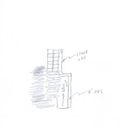Wet brick
I am a builder completing a renovation to a late 19th century Victorian house outside Boston. I have noticed that the brick foundation looks wet even after a prolonged period of dry weather. This mostly appears right at grade but have noticed spots above grade, as well.
A little bit more about the foundation assembly. The foundation is a combination fieldstone wall (below grade) and double wythe brick wall (above grade). We excavated the basement down 16″, which involved pouring 4′ tall, 6″ thick buttress walls in front of the below-grade, fieldstone portion of the foundation. The buttress walls were wrapped in XPS and closed cell spray foam was sprayed from that point up to the rim. A picture is attached of the assembly as well as a couple of shots of the “wet brick” condition.
My feeling on it is that the below grade portion of the wall is taking some amount of water in; there is no drying potential to the inside due the the buttress wall/XPS/closed cell, and the brick is sucking it up to grade. I would be interested to others’ opinions on this and if there are any other similar experiences out there?
GBA Detail Library
A collection of one thousand construction details organized by climate and house part











Replies
The trench in the second photo suggests there are no gutters in this area. I would suspect water is dripping off the roof and splashing on the brick. In my area, I have quite a lot of condensation on my metal roof most mornings, which drips to the ground as the metal warms.
Yes, that trench came from the period during construction when the gutters were off. Gutters have been installed at this point and the final grading/topsoil will be done by the landscaper in the spring.
The picture was taken a couple days ago after a good 4-5 days of dry weather.
If you've checked out the roof and other exterior water sources like Steve Knapp is suggesting, and that doesn't solved the problem, check out this BSC article: https://buildingscience.com/documents/insights/bsi-011-capillarity-small-sacrifices
If you can't prevent capillary action from sucking water into the bricks, the BSC article advocates using a sacrificial rendering so that the damage is concentrated on the easily repairable rendering rather than the much more difficult to repair bricks.